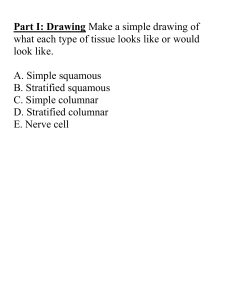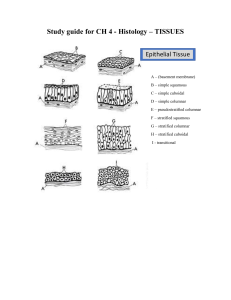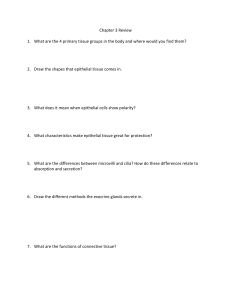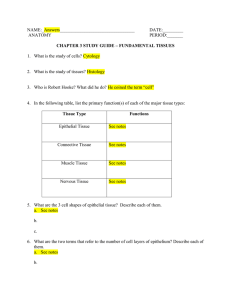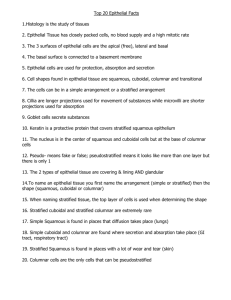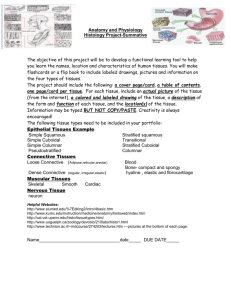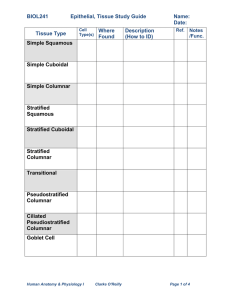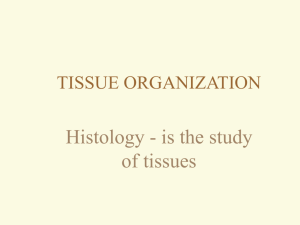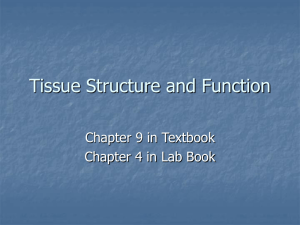Epithelial, Connective & Muscle Tissues
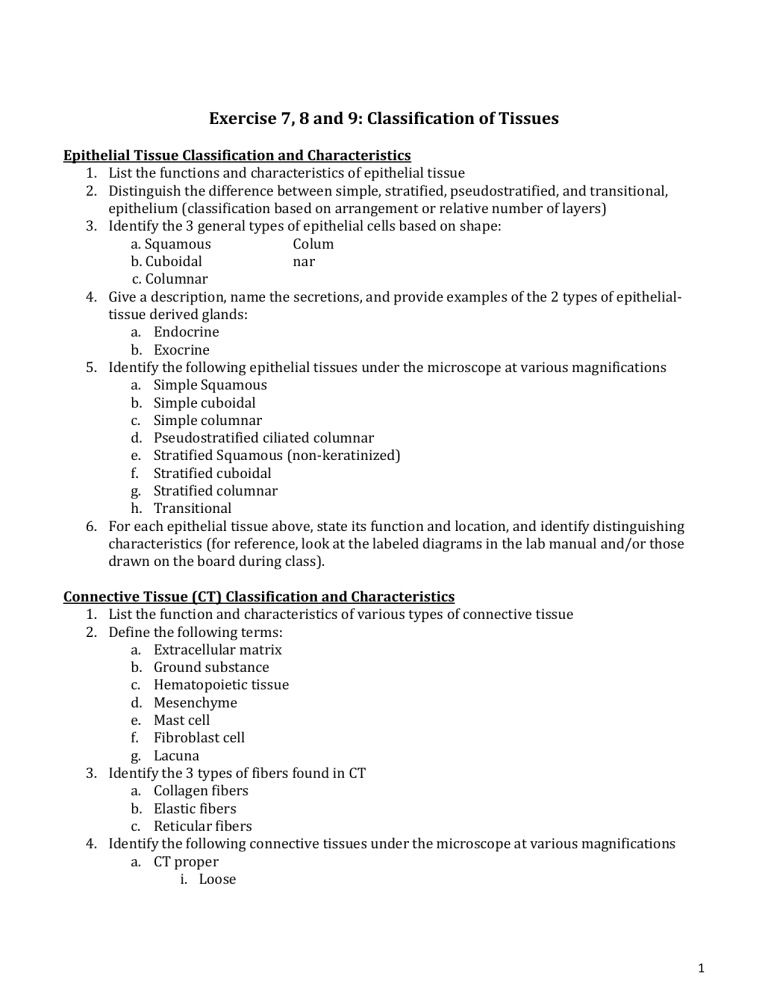
Exercise 7, 8 and 9: Classification of Tissues
Epithelial Tissue Classification and Characteristics
1.
List the functions and characteristics of epithelial tissue
2.
Distinguish the difference between simple, stratified, pseudostratified, and transitional, epithelium (classification based on arrangement or relative number of layers)
3.
Identify the 3 general types of epithelial cells based on shape: a. Squamous Colum b. Cuboidal
c. Columnar nar
4.
Give a description, name the secretions, and provide examples of the 2 types of epithelialtissue derived glands: a.
Endocrine b.
Exocrine
5.
Identify the following epithelial tissues under the microscope at various magnifications a.
Simple Squamous b.
Simple cuboidal c.
Simple columnar d.
Pseudostratified ciliated columnar e.
Stratified Squamous (non-keratinized) f.
Stratified cuboidal g.
Stratified columnar h.
Transitional
6.
For each epithelial tissue above, state its function and location, and identify distinguishing characteristics (for reference, look at the labeled diagrams in the lab manual and/or those drawn on the board during class).
Connective Tissue (CT) Classification and Characteristics
1.
List the function and characteristics of various types of connective tissue
2.
Define the following terms: a.
Extracellular matrix b.
Ground substance c.
Hematopoietic tissue d.
Mesenchyme e.
Mast cell f.
Fibroblast cell g.
Lacuna
3.
Identify the 3 types of fibers found in CT a.
Collagen fibers b.
Elastic fibers c.
Reticular fibers
4.
Identify the following connective tissues under the microscope at various magnifications a.
CT proper i.
Loose
1
Areolar
Adipose
Reticular ii.
Dense
Regular
Irregular
Elastic b.
Cartilage i.
Hyaline ii.
Elastic iii.
Fibrocartilage c.
Osseous (bone) d.
Blood (a type of fluid connective tissue) i.
RBC ii.
WBC iii.
Platelets
5.
For each connective tissue above, state its function and location, and identify distinguishing characteristics (for reference, look at the labeled diagrams in the lab manual and/or those drawn on the board during class).
Muscle Tissue
1.
List the functions of muscle tissue
2.
Identify the following types of muscle tissue under the microscope at various magnifications a.
Skeletal b.
Cardiac c.
Smooth
3.
For each muscle tissue above, state its function and location, and identify distinguishing characteristics (for reference, look at the labeled diagrams in the lab manual and/or those drawn on the board during class).
Complete the Review and Practice Sheets at the end of each Exercise in lab manual
2
